D'Amigo recorded one goal and one assist in 18 games with the Leafs. He was replaced by Peter Holland.

D'Amigo recorded one goal and one assist in 18 games with the Leafs. He was replaced by Peter Holland.

When playing in the Maple Leafs top-6, Holland was producing at a pretty consistent clip, however he has been skating on the fourth line for his last four games with Toronto which handicaps his value and production. That is likely where Holland will find himself on Tuesday vs. Boston, because he isn't about to overtake Tyler Bozak or Nazem Kadri on the top two lines.

McGinn played in two games in his most recent call-up, he averaged 12:46 TOI and did not record a point in either contest.

Marchenko did not record a point in his only game with the Red Wings, he heads back to the AHL where he has 16 points (2G / 14A) in 33 games.
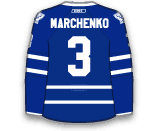
Corrado, 20, has appeared in six games with the Canucks this season, registering a plus-1 rating. He also recorded five points (2G / 3A) and 20 penalty minutes in 29 games with the Comets this season. He return to the AHL means that Alexander Edler is ready to return to the Canucks lineup tonight.

Szwarz has recorded two goals in 20 games with the Coyotes this season. While in the AHL, the 22-year-old has seven points (4G / 3A) in 12 games. He has been recalled to provide depth at forward fro the Coyotes, no word on if he will be in the lineup tonight.

Murphy skated in 21 games, recording eight points (1G / 7A), pretty good numbers for a 20-year-old rookie defenseman. The Coyotes recalled Jordan Szwarz to provide some depth at forward, David Schlemko is expected to replace Murphy in the lineup.

Street leads the Abbotsford Heat in scoring with 17 goals and 16 assists for 33 points in 31 games including the overtime game winning goal tonight in a 3-2 win over San Antonio. He was recently named to the 2014 AHL All-Star Team. Street played eight games with the Flames earlier this season picking up one assist.
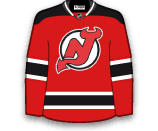
Grigorenko’s agent, Jay Grossman, confirmed to the Times Herald that Grigorenko won’t be reporting to the Remparts. Grossman declined further comment until he and Grigorenko speak to the team. The Sabres obviously believe going back to juniors is best for Grigorenko's future, but the 19-year-old wants to play in the NHL. Monitor this situation going forward.

Larsson has just one assist in 20 games with the Sabres this season, so he heads to the AHL where he has tallied nine points (2G / 7A) in 13 games for Rochester.
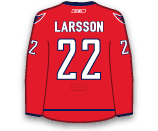
"We're not looking at what he can do now," said Sabres head coach Ted Nolan. "We're looking at what he can do down the road."The Sabres are not going anywhere this season, so going back to juniors is likely best for Grigorenko's development. He will likely shred the QMJHL when he returns, he posted 70 goals and 69 assists (139 points) in 92 career games during his first two seasons with Quebec.

Latta (lower-body) is currently on long-term injured reserve, so he will wait to return with Hershey. He has been out since December 15 with a lower-body injury.
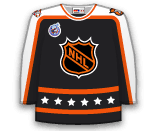
Boychuk suited up for eight games during his call-up, he registered one goal and two assists in that span, including a two-point (1G /1A) game on Thursday vs. the Maple Leafs.

Sutter dressed in five of the Hurricanes last six games, he recorded one goal and one assist. he returns to Charlotte where he has tallied up 14 points (2G / 12A) in 22 games this season.

Redmond has appeared in three games with the Jets this season, he has been held off of the score sheet in all three contests. He has recorded 13 points (5G / 8A) in 17 games with the St. John's IceCaps. There is no word on whether or not he will draw in on the blueline on Saturday.

With the Red Wings missing Pavel Datsyuk, Darren Helm and Johan Franzen, they are in need of another centre, hence the recall of Sheahan. Sheahan recorded two assists in four games with the Red Wings, both came in a game vs. the Maple Leafs on December 21. He could find himself in the lineup in Los Angeles on Saturday.

Andersen allowed three goals on 26 shots in a win over the Predators last night, but as been sent down so he can get more playing time, something he his not getting behind a red-hot Jonas Hiller right now. He is expected to start tonight with Norfolk. Andersen has a bright future ahead of him, but he is only a spot-start option when with the Ducks at this point in his career.
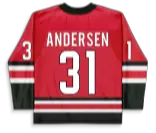
Gibson, 20, is in his first full season in the AHL and is having a strong campaign to this point. He is 11-9-3 with a 2.61 GAA and .915 SV%. He has been recalled because the Ducks want Frederik Andersen to get more starts. Gibson will serve as the Ducks' number-2 behind the scorching Jonas Hiller. Anaheim has a back-to-back on Saturday and Sunday, there is a chance that Gibson could make his NHL debut this weekend.

Forsberg was named MVP, Best Forward and a media all-star at the 2014 World Junior Championships, helping the host nation to a silver medal, his third time placing at the tournament. He has posted five points (1G / 4A) in 12 games with Nashville, and eight points (3G / 5A) in seven games with Milwaukee (AHL).

In six games with the Flyers this season, McGinn has averaged 12:40 TOI and netted three goals. With Adirondack, the 23-year-old has 12 points (6G / 6A) in 28 games. He is eligible to play Saturday, but it remains to be seen if he will crack the lineup.
